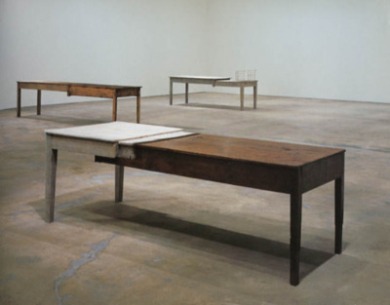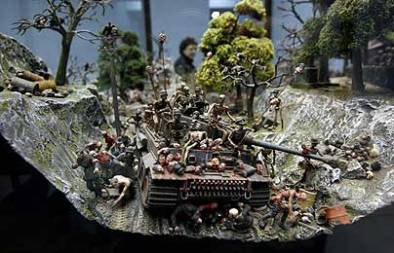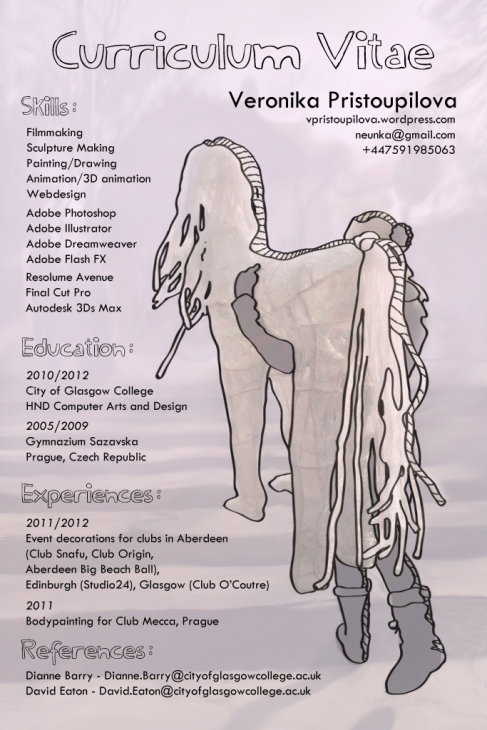
During lectures as well as seminars, I started to understand that writing process could be very personal. I realised how much I write everyday and I never gave it a further thought. I never thought it is something that I can use as a tool in my art practice.
My writing was always about my thoughts, summarising of my opinions, little quotes from books I read or poem-like lines that escalated from all of it.
This is my reflection on how writing affected all my life without me even noticing it.
When I was about eight year old, my cousin gave me my first ever diary. I wrote in it what time I woke up, what day it was, what I ate, what I watched in TV, what friends visited me etc. Silly little things that make me laugh whenever I come across my old diary. I had no idea how to use something so powerful as a pen and paper without teachers‘ guidance.
When I was around twelve I realised that I can write whatever I want in it – that nobody will read it (I was still a bit suspicious that my parents might, so I wrote sometimes in puzzles that only I could understand) and it was such a release for an adolescent girl full of emotions.
I started to write about who I fancy, what argument I’ve been in, how angry I was at my friends, how my parents don’t understand me and other – now bit pathetic and laughable – problems. But without these essays of my everyday life, I would not develop my inner, private voice the way it is.
When we had lecture about private voice with Christine Arnold – Solomon, I started wonder if my diaries are really written in private voice. Isn’t it true that we always expect or hope that one day someone else would read it? Or as Iain Irving made me wonder during one of his seminars – shouldn’t we expect that our (thinking that we all became famous one day) diaries, notebooks and sketchbooks would be read? Should we change something about our writing because it might be read? Or is that the thing what makes difference between private and public voice – simply the thought of someone else while writing?
As I didn’t think that any of my diaries would be read in the wider public when I was twelve, I poured my anger and frustration into paper. And it made me not think about my problems anymore. Or at least for a while. I can’t remember how many angry letters to my friends I wrote – thou never send. And still, with most of those people, I‘m a friend. I needed to spill it out, but reading it after myself made me understand how ridiculous the fight was. And that’s when I could move on. Start to think about things that were more important for me. Things like friendship itself. Or art. Or the books I was reading. Or where the Universe ends. Where it starts? Where am I? And am I real? What is after death? Do we go to hell? Does God exist?
When I was around fifteen, I started to learn philosophy, sociology, psychology and religion studies at school. These subjects were so important to me! Realising, that over two thousand years before me, there lived people who had the same questions like me – like Sokrates and his “I only know that I know nothing”, Saint Augustin dealing with question how do we know that we exist – answering “Dubito ergo sum” – I doubt therefore I am and later on René Descartes changing it slightly to “Cogito ergo sum” – I think therefore I am.
But for those subjects my private voice was unimportant. The formal and public voice was what counted. My opinions were useless research was compulsory. So for a while my personal opinion didn‘t exist. All the knowledge was gain from books and my aim was to find other people’s thoughts and researches and put them together in the way I understood the subjects. The way it made sense to me.
That’s where I learned that using books and libraries (not internet and Wikipedia) is where the knowledge rests, waiting to be discovered. ‘Googling’ things that you are interested in is easy and saves time, but if one really want to get in the depth, one needs books and references in them to be sure about the source and the knowledge hidden behind.
Finding formal voice wasn’t easy for me as I had very strong opinions about mostly everything. Though I found it and it made me more humble and – I would say – smarter and doubtful. I stopped to believe in everything that I’ve been told and thought. It made me want more information about everything. I found that knowledge is something that I am highly passionate about and discussions are important part of learning process.
With more gained knowledge, with more read books, it became clear that I can speculate even in essay that should be very formal. I could use different opinions on a certain problem and make a conclusion out of it – and that’s where I would use my brain and show my understanding of it. And as Cameron Campbell’s lecture shown me – formal voice can seem sometimes very informal.
As finding my formal voice was difficult, it was nothing in compare to what was waiting for me ahead. I moved from Prague in Czech Republic, my home, to Glasgow in Scotland. I was twenty and I had always A’s in English as well as in most of other subjects. But once I got there, I understood how unimportant it was.
For the first few weeks at the college that I attended I didn’t understand much except to my lecturers and tutors whose English was English. My fellow students were Glaswegians through and through with big accent. During discussions I was just listening, trying to understand what they are talking about. Barely ever spoke.
When I had to write essays about artists and philosophical aesthetics in English, I felt like an eight year old with my new diary and pencil, without having a clue what to do with it, again. I don’t think I ever felt so frustrated – having all the knowledge in my head, but not sure how to express myself, not sure if anyone would understands my long sentences and strange syntax.
But I wrote. I wrote a lot. I bought new diary and try to write only in English. My sentences sometimes didn’t make any sense, but it was only me who was reading it anyway. There I am sure I wrote in private voice – I really didn’t want anyone to read it after me. It was a mess.
I was thinking about my first year in Scotland and my writing back then during lecture by Tania Kindersley. How she said that she needs writing for her mental health. The same sentence I heard J. K. Rowling said in one of her interviews. And I must say, I understand it completely. When I came to Scotland, it became so important for me to write my thoughts everyday. I think it might have been some kind of protection against forgetting who I really am. I needed to remember myself because while new people and new environment enter your life, it is so easy to forget who you were and where you came from.
When Tania Kindersley mentioned how ritualistic is for her to write everyday and hear her keyboard as a mantra, I was thinking of how I started a blog in English. This blog. I don’t think many people read anything from it but it doesn’t matter because it was meant to be for me even though it was written in formal voice.
Going through this blog now, after three years being in Scotland, I laugh at the first posts with the same type of laugh I use when I go through my first diary. Silly mistakes. Short sentences. Wrong spellings. But it is all part of me.
The second year in the same college was easier. I learned how to be better in writing English. I learned about art and things I am interested in and passionate about. But there is funny thing about knowledge. The more I learn the more I realise how few things I know. And with the writing it’s the similar. The more I write, the more mistakes I see in my previous texts and essays and they all seem so weak and silly.
After two years of college I decided that I want more than graduate in Higher National Diploma course from Computer Arts and Design. I wanted to go to university.
Applying process required writing several cover letters and personal statements. During this process I learned how to write about myself, how to show my ideas in few sentences clearly and originally. I got into second year of Contemporary Art Practice at Gray’s School of Art.
In my first year at Gray’s I was writing more and more. I carried small notebooks everywhere I went. I was writing my thoughts and experiences on the bus, at school, at home, on the beach, in the park… But combining writing and my art practice was a bit random. It did not come out of my writing, but from idea that I got while making the art piece. Like in my casting project.

But in my side projects like this photo album, I was writing little notes from my notebooks on my studio space wall and then putting it together with my photos.

Then I abandoned idea of combining writing and art practice in that way for a while. At the beginning of my second year at Gray’s, we had to write our personal statement. Thanks to writing personal statements while applying for university, I had experience with this type of public voice. So I decided to be more creative in my writing.
This is my personal statement:
“ Me, myself and I.
I am an actor and an audience.
I am the beast that hunts the creatures inside the paradise of my own mind.
I will try to seduce you on my side of the world.
I would try to persuade you that my point is better.
I could try to convince you about my opinions.
But I won’t fight you, I won’t be aggressive, I won’t be negative and I won’t be impatient.
I will give you time and I will give you space. But you would have to find the answers on your own.
Prayer is just another word for meditation.
Repetition is the way of focusing on the important.
Silence is the speech of understanding.
Music is the healer of the soul.
If there is a dance, fear has no chance.
Emotions express themselves through body movement.
Meaning is hidden inside each and every footstep.
Go back and forth to unfold layer after layer who is hidden inside.
Perform a ballet without being seen. Act like a human without being mean.
If you are a performer, it doesn’t matter who you are, but how good you are. If I am a performer, who am I?
As Piet Mondrian stated: “The world we see is just an illusion and it is a task of art to give a glimpse of the real world behind that.”
There is nothing new, only different. “
As you might see, it is somewhere between poem and jabbering. But this statement was my breaking point. I realized that I couldn’t make everybody to understand me. I realized that my strength is in the fact that I don’t write like native English speaker. I realized that I have my own way of expressing myself.
I use synonyms of words in sentences that people are not used to hear. My sentences are sometimes too long to catch up with everything that is in them. My syntax is usually weird. But is it wrong? Probably. But it was while writing my personal statement when I realized how much I care about others to understand me. If someone doesn’t even try to understand meaning behind my sentences, it’s not only my fault. It is his/hers as well.
And the same can apply for art. I can try however I want, but there still will be people who won’t understand the meaning behind. And there still will be people who don’t care. And there still will be people that would try to put me down – either as an artist or as a human being. And in this is hidden the bravery of an artist and a human nature in general. Artists will always have to expect that their work will be misunderstood or misinterpreted. But it might not be bad thing. Some contemporary artists encourage viewer’s point of view and does not try to give them perfect description of their work. Those are the artists whose work is more mysterious than obvious.
I was always a protagonist of not talking about my artworks too much. I thought that art is a different medium – opposite of writing. Artists interpret their ideas through visual mediums; writers interpret their ideas through words. But is it really as simple as that? Does it have to be like that?
I think Jack Kerouac and whole beat generation proved that writing style could be as blurry and conceptual as modern paintings or sculptures. And even before him, poetic itself is a form of an art style for me. This is where I found that an artist doesn’t have to interpret his/hers artwork clearly as a novel but blurry with hints like a poem. You don’t have to explain your audience step by step what you mean by it, just give viewer a glimpse of feeling that you had while making the piece.
Good example of this is La Ribot. In the book LIVE Art and Performance she explains her art in one paragraph very unusually.
“There is no more representation, only presentation.
There is no more magic, only reality.
There are no more surprises, only variable perceptions.
There are no more statements, only ambiguity.
There is no more stability, only imbalance.
There is no more theatricality, only plasticity. “
This paragraph is rather a statement, motto, something that she believes in. It is indeterminate and doesn’t explain exactly what her work is about. But on the other hand, the audience that saw her performance, can make a link between the performance and those indistinct words and create its own mind about what the performance really was about and how the audience understood it – everyone creates its own experience. Well if the audience is interested enough to care.
La Ribot on writing, New York 1993: “To write is to let oneself be swept along by a tongue of black ink that glides slowly without gestures or character, all the while imposing its will, giving away yourself as if you were a murderer.”
What I think she means by that is the determination behind describing one’s artwork by words. Precise interpretation can destroy beautiful piece of art – because some artworks supposed to be explored, perceived, thought about – not necessarily thrown under a microscope and dissect.
At the end of last year and this year continuing I became more interested in performance art. That is where my future art practice going to. In performance art, writing is a big part. Words have a big impact on understanding the piece. Either if you use words in the performance – by talking, writing, reciting – or if you don’t, by both you make a statement. If you talk about your performance – and by that change viewer’s perception of it or not and leave it entirely up to audience. There are so many options. How I am going to use my voice in future I am not sure, I am still exploring. I am thinking. But one thing I am sure of – I am going to write. I am going to explore life through words as I did before.
And there is another big challenge for me. Another feeling of eight year old Veronika coming with another new diary, with new, sharp pencil, ready to make mistakes. Ready to give everything, but this time not just to a paper, this time to an audience too.
As I stated earlier – I was always a protagonist of not talking much about my artwork. This reflective essay shows how wrong I was by thinking that. I was never talking and writing about anything else. I am an artist. My life is about art. I write about my life therefore I write about art. My life is art. My art is life.
References:
Wolfsdorf, David; Journal of Aesthetics & Art Criticism; Spring2007, Vol. 65 Issue 2, p175-187
Schlagel, Richard H.; Review of Metaphysics; September 2003, Vol. 57 Issue 1, p105-133
http://www.youtube.com/watch?v=Pxh2sgg_iyA – interview with J. K. Rowling
vpristoupilova.wordpress.com – Veronika Pristoupilova’s blog
Heathfield, Adrian; Live: Art and Performance; 2004, London, Tate Publishing








